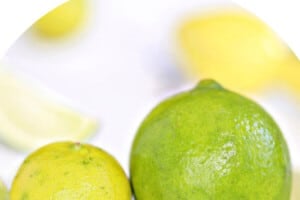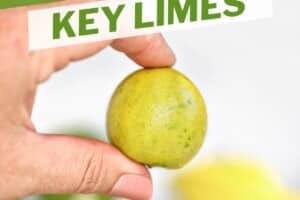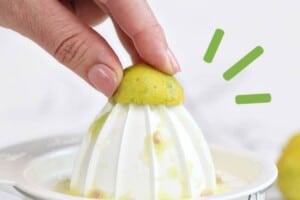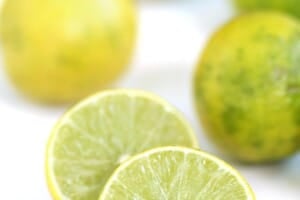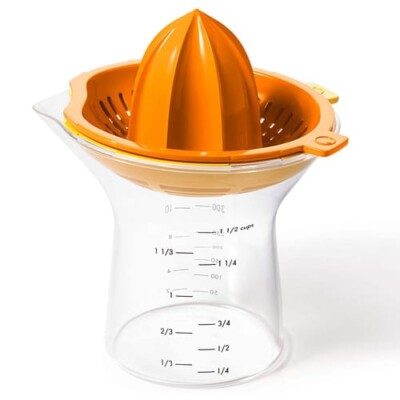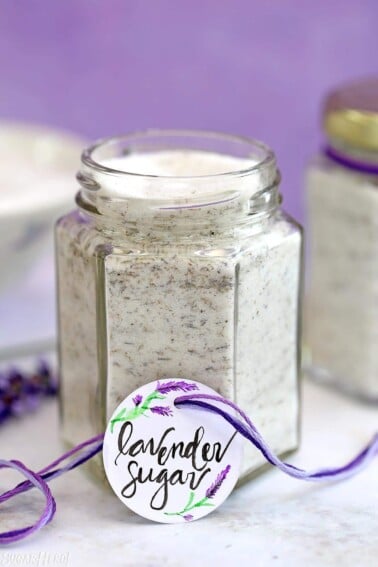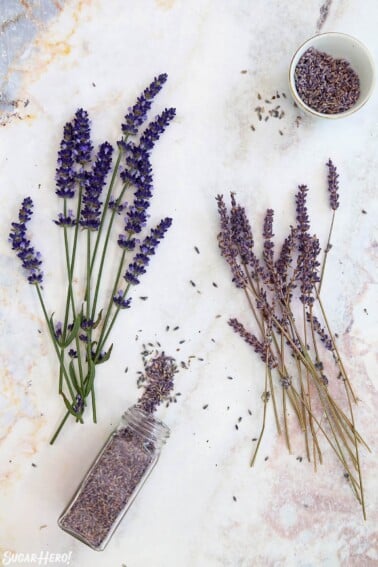Maybe you’ve heard of key limes, but aren’t quite sure what they are, where to find them, or how to cook with them. You’re not alone! Although key lime pie is well known, the limes themselves are more of a mystery to the average home cook.
We’ll take you through everything you need to know about key limes: what key limes are, how they differ from regular limes, how they taste, how to juice them, how to store the juice, and what you can use to replace key lime juice.
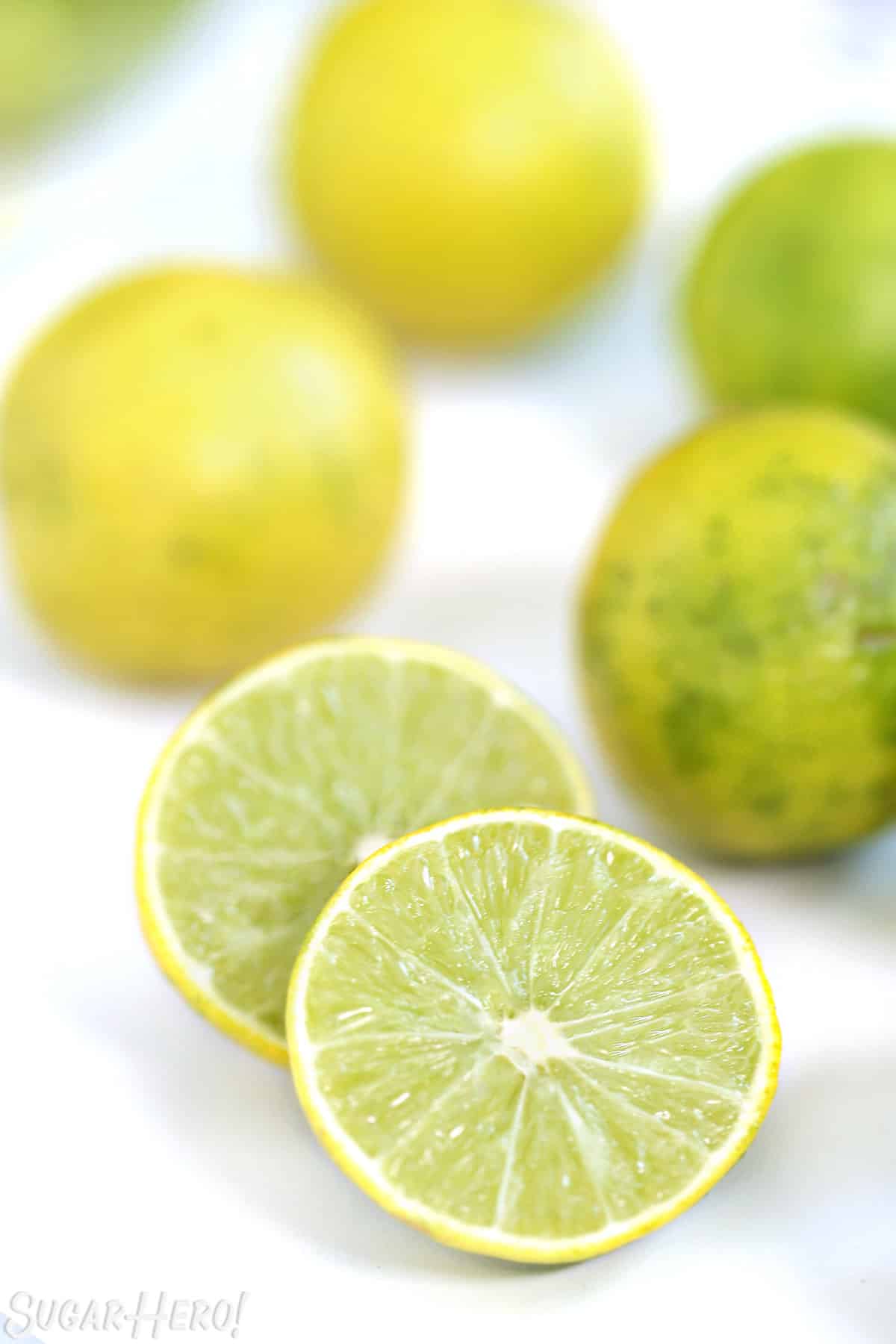
Table of Contents
- What are key limes?
- How are key limes different from regular limes?
- What do key limes taste like?
- Where do you find key limes?
- How do you juice key limes?
- How do you store key lime juice?
- How many key limes does it take for 1 cup of juice?
- Can you substitute regular lime juice for key lime juice?
- What else can you use to substitute for key lime juice?
- What to bake with key lime juice
What are key limes?
Key limes are a versatile citrus fruit whose juice is delicious in desserts, drinks, and even savory dishes. You might be most familiar with them in the context of key lime pie, but these small fruits with BIG flavor can add a sweet-tart bite to many different recipes.
Key limes, also known as Mexican limes or West Indian limes, are rounder and much smaller than regular limes. They are named after the Florida Keys, where they were first cultivated in the 19th century. Key limes are typically harvested when they are still green and are about the size of a golf ball.
When ripe, key limes should be soft when squeezed, heavy for their size, and can be green, yellow, or some combination of the two.
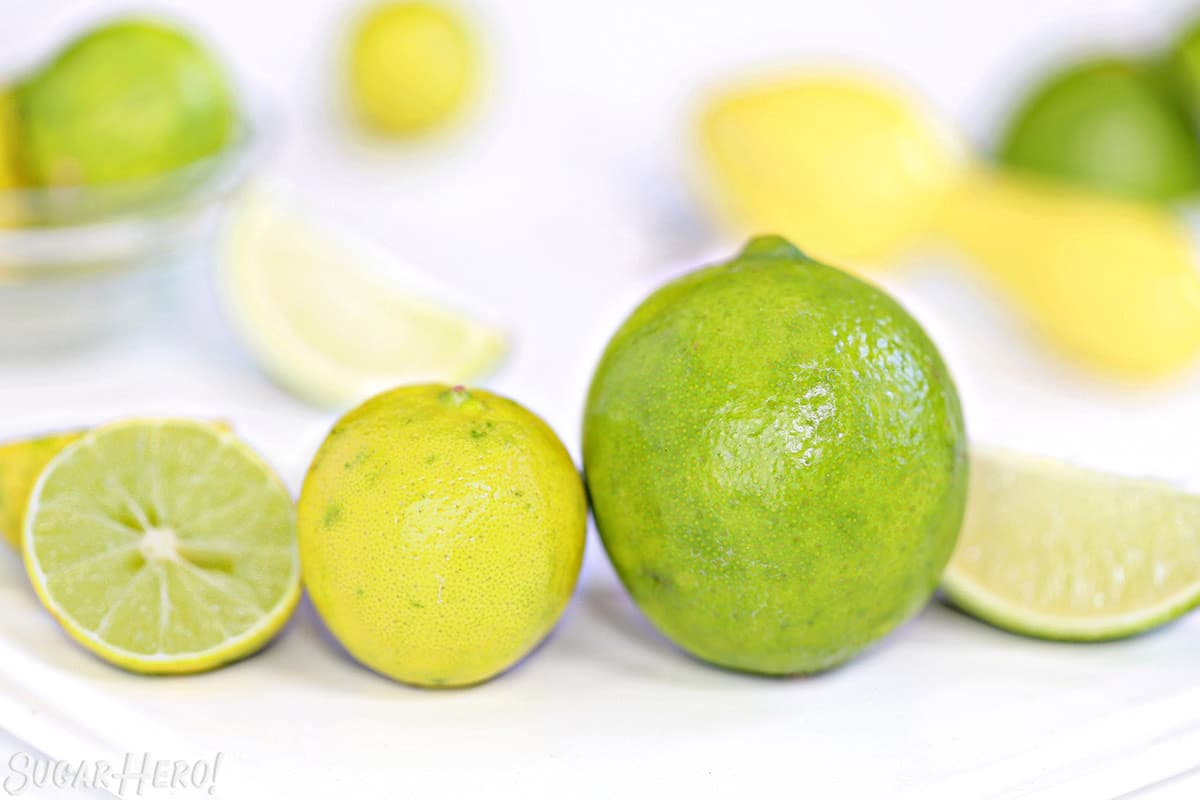
How are key limes different from regular limes?
“Regular” limes, the kind most often found in the average American supermarket, are also known as Persian limes.
When you think of what a stereotypical lime looks like, chances are you’re thinking of a Persian lime. They have dark green skin, the characteristic oval shape with tapered ends, and can range in size from 2-4 inches or more.
Key limes are much smaller and rounder than regular limes. The average key lime weighs about 3/4 ounce, and it takes 18-20 key limes to yield a cup of juice. In contrast, a medium Persian lime weighs about 3 ounces, and it takes 5-6 regular limes to yield a cup of juice.
In addition to the size difference, key limes also have a thinner skin and a higher acidity level than regular limes, which gives them a more intense and tart flavor.
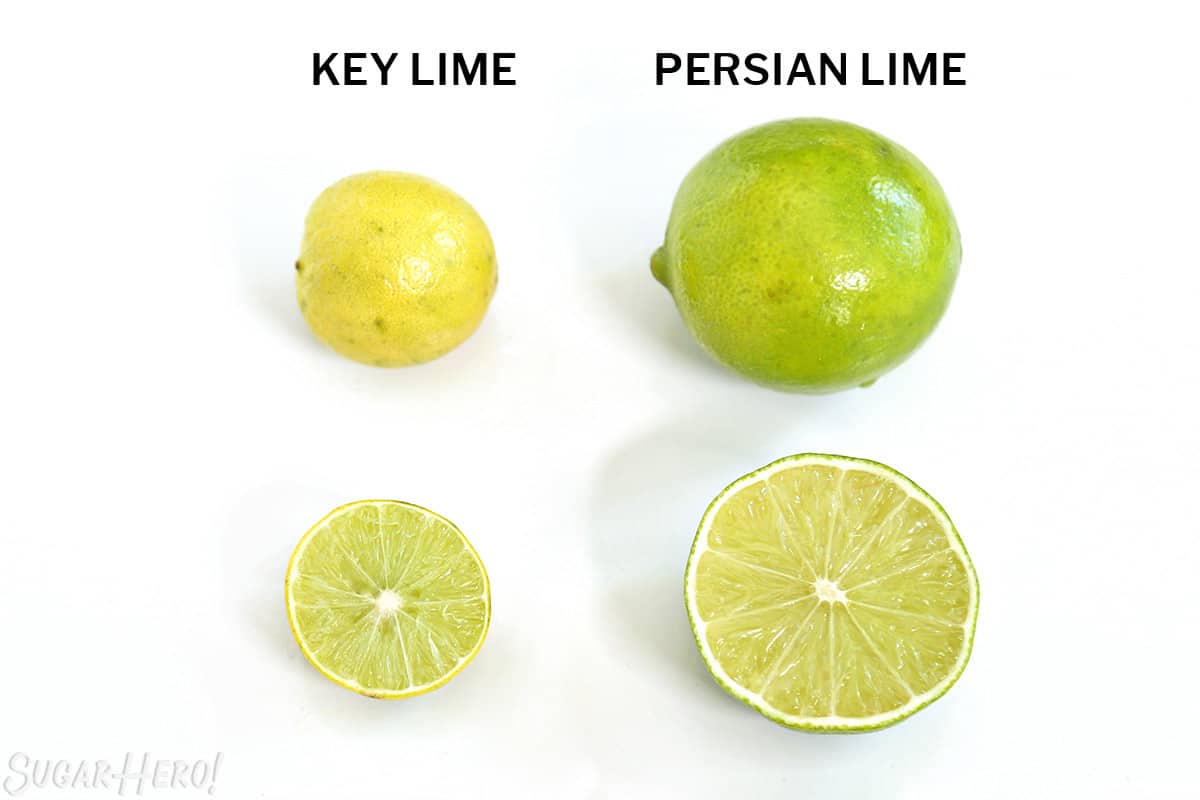
What do key limes taste like?
Key limes have a flavor that is different from regular limes. They are more acidic and have a more intense, tangy taste – more “lime-y,” if you will. Some people describe the flavor of key limes as slightly sweet with a hint of bitterness. They also have a floral aroma that is more noticeable than regular limes.
These differences shine in recipes like limeade, where the lime flavor is really the star. When used in cooking recipes, where the lime juice is mixed with other ingredients, it’s harder to identify key lime’s unique flavors.
Where do you find key limes?
This depends on where you live! If you are near a citrus-growing region like the Florida Keys, they may be easy to find and plentiful in any grocery store.
I live on the West Coast, where they are much less common. I have the best luck finding them in Mexican supermarkets, and occasionally at high-end grocery stores (where they charge a small fortune for these small fruit!).
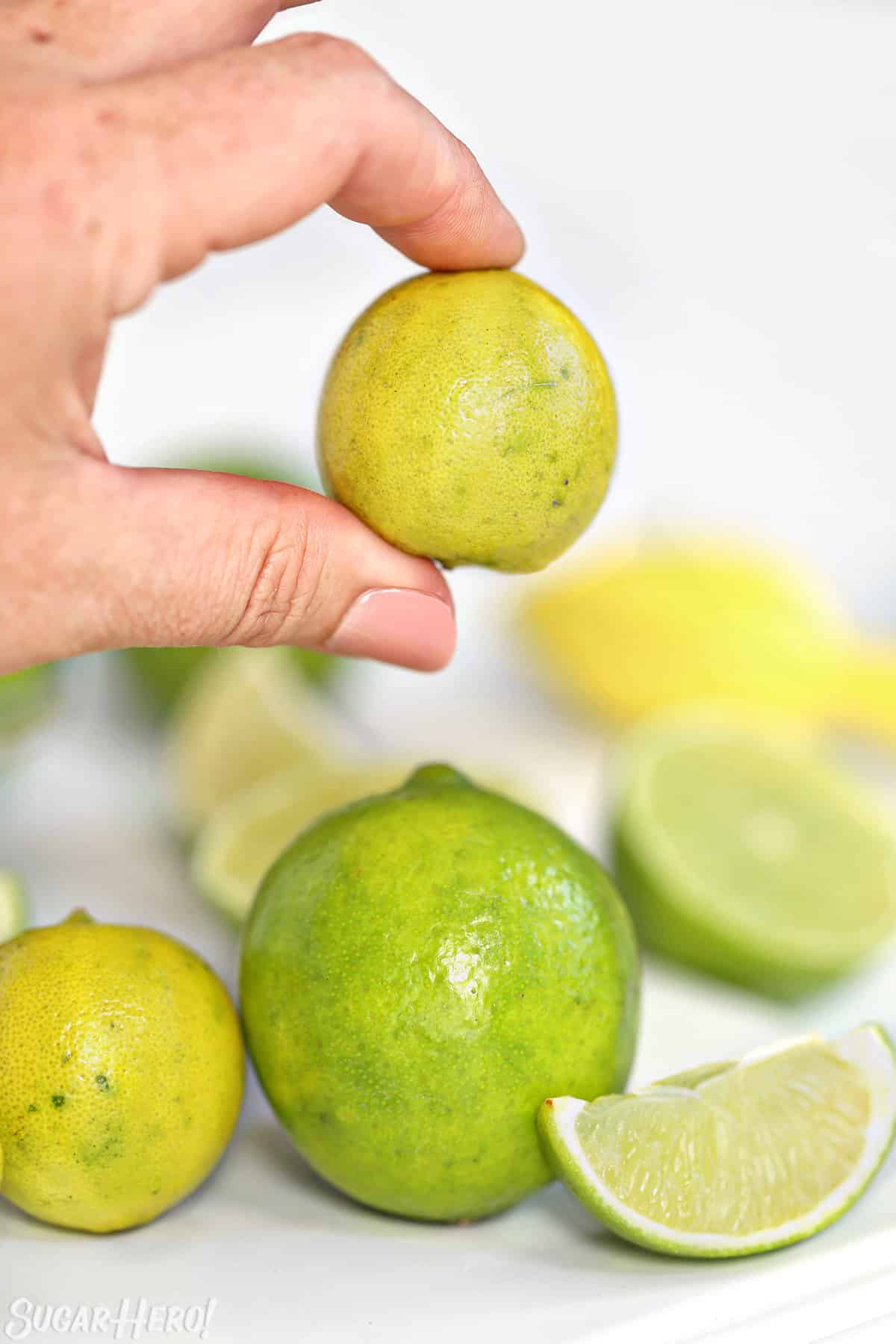
How do you juice key limes?
Juicing key limes can be a bit tricky due to their small size and thin skin. However, there are a few tricks you can use to get the most juice out of your key limes.
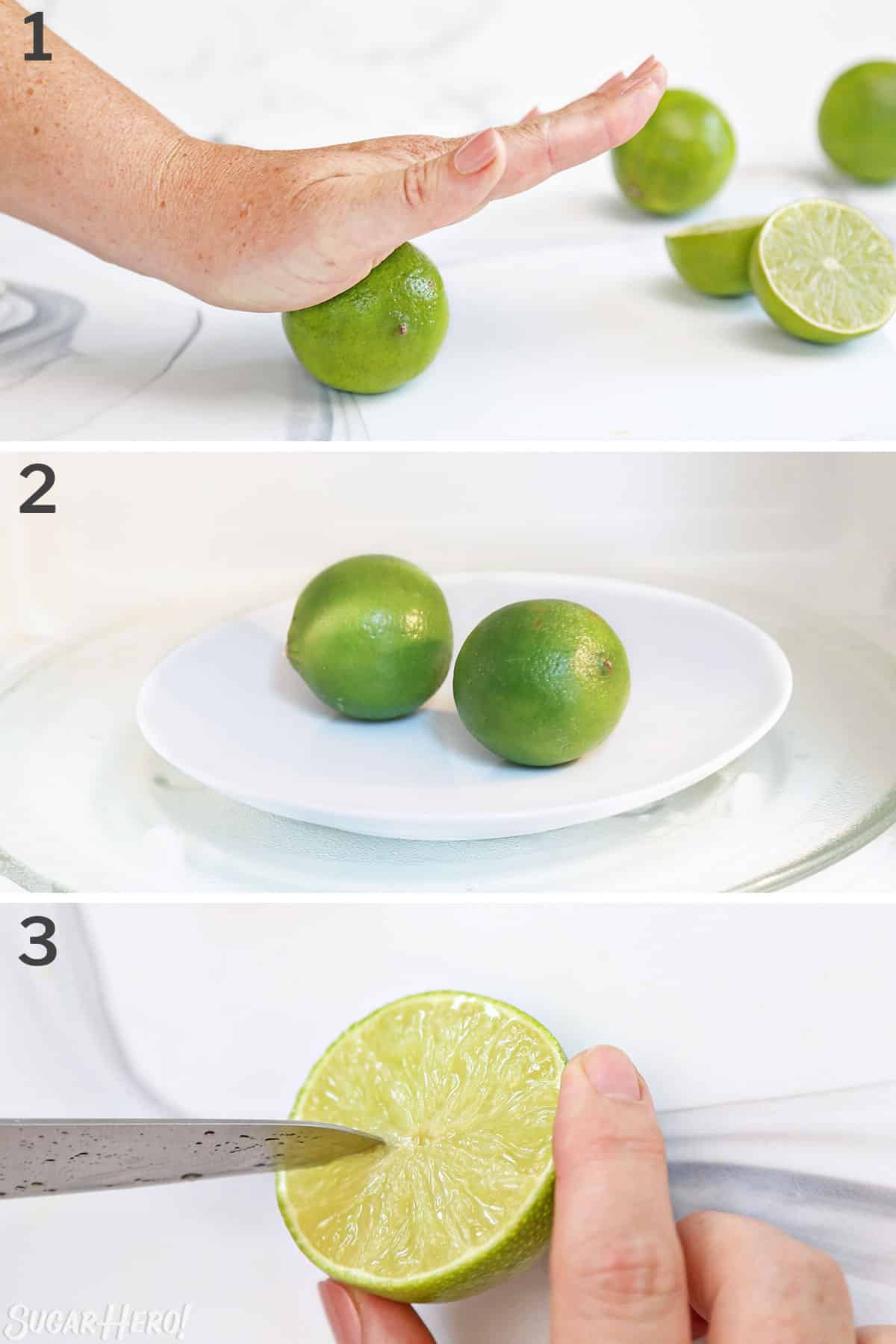
Prepare the limes
- Before juicing, try firmly rolling the limes on a hard surface, such as a countertop, to help burst the membranes and release the juice.
- Another option, which you can do in addition to or instead of rolling, is to microwave the limes for a few seconds, like 5-8 seconds at a time, to soften them before juicing.
- After the limes are sliced, you can also take a knife and make small cuts in the segments to pierce the membranes and yield more juice.
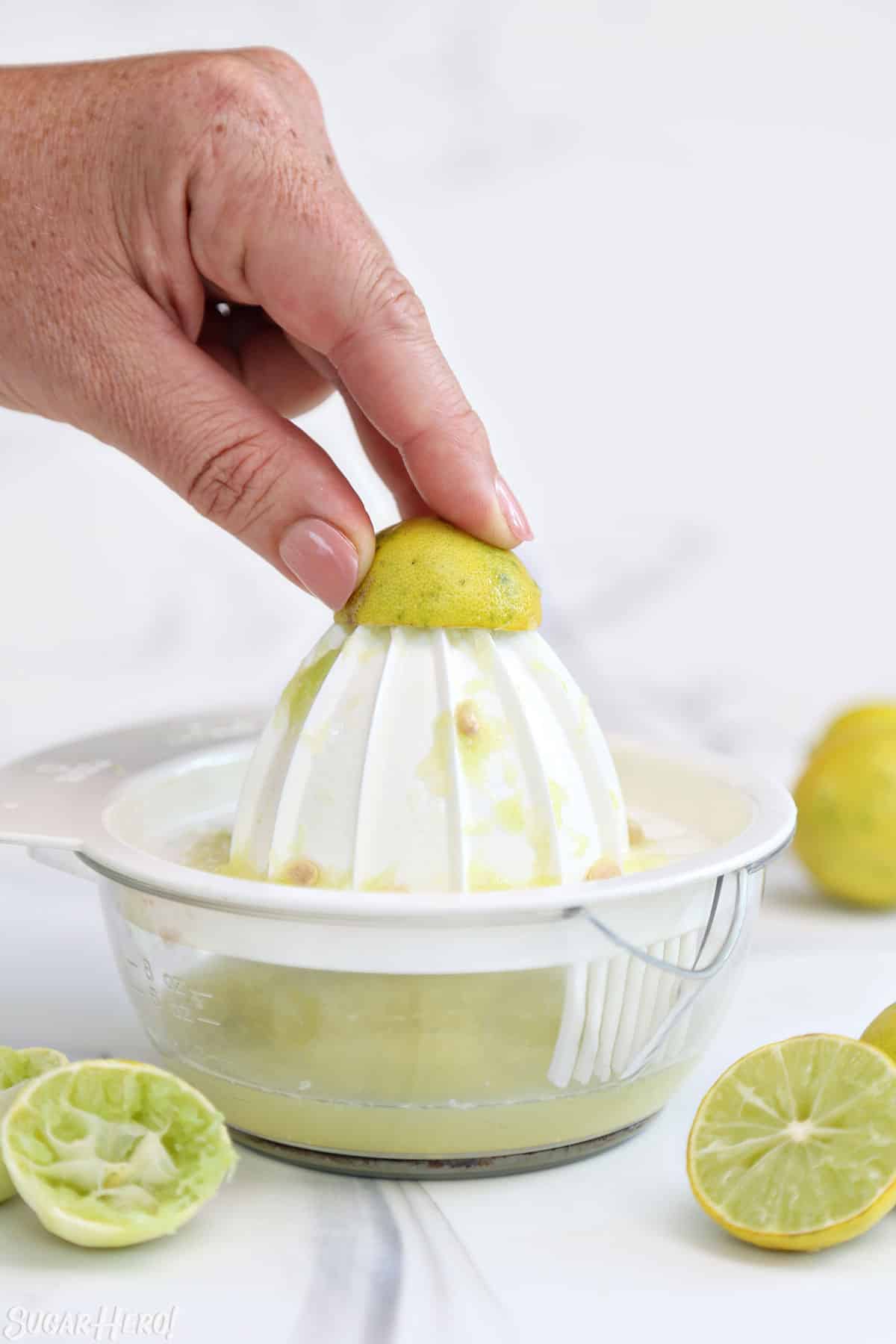
Juice the limes
Once softened, cut the limes in half and use a juicer or citrus reamer to extract the juice. I prefer a countertop juicer, as I find a reamer difficult to use on such small, thin-skinned fruits.
Note: If you want to zest your limes, make sure you do so before cutting and juicing them!
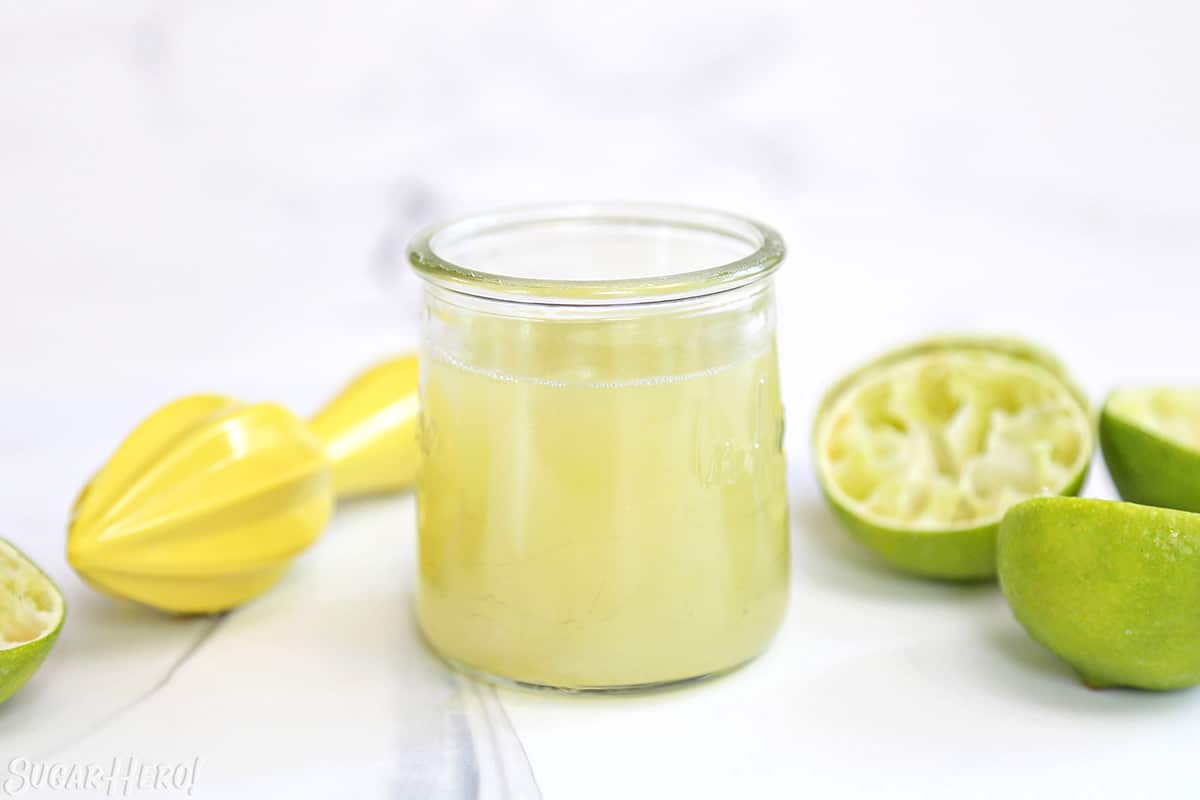
How do you store key lime juice?
Freshly squeezed key lime juice can be stored in an airtight container in the refrigerator for up to a week. I recommend using glass containers (jars or bottles) rather than plastic.
It can also be frozen for longer storage. To freeze key lime juice, pour it into an ice cube tray and freeze until solid. Once frozen, transfer the key lime juice cubes to a freezer-safe container or bag, and store in the freezer for up to three months.
How many key limes does it take for 1 cup of juice?
This can vary depending on the ripeness, size, and juiciness of your fruit, but as a general rule, you will need approximately 18-20 key limes for 1 cup of juice.
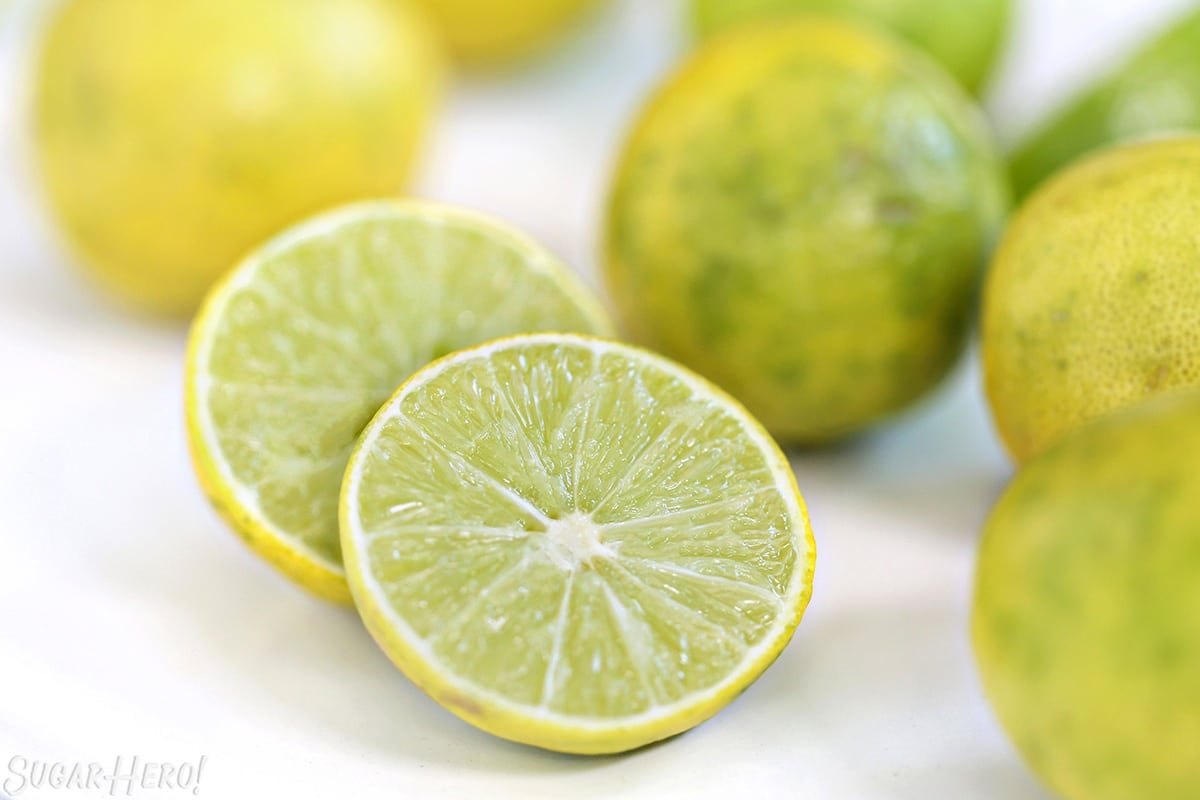
Can you substitute regular lime juice for key lime juice?
Yes! If you don’t have fresh key lime juice available, fresh regular lime juice is the next best thing. In most cases, after other ingredients are mixed in, the swap will be barely noticeable, if at all.
You also have the option of using bottled key lime juice, but in my opinion, fresh juice is always strongly preferred. The processing that goes into making lime juice shelf stable gives it an overly harsh and artificial flavor.
What else can you use to substitute for key lime juice?
No limes anywhere? No problem! These won’t be perfect matches, but depending on the recipe, one of these might work as a lime juice substitute in a pinch:
- lemon juice
- tart orange juice
- grapefruit juice
- apple cider vinegar
- white wine vinegar
- lime or lemon oil
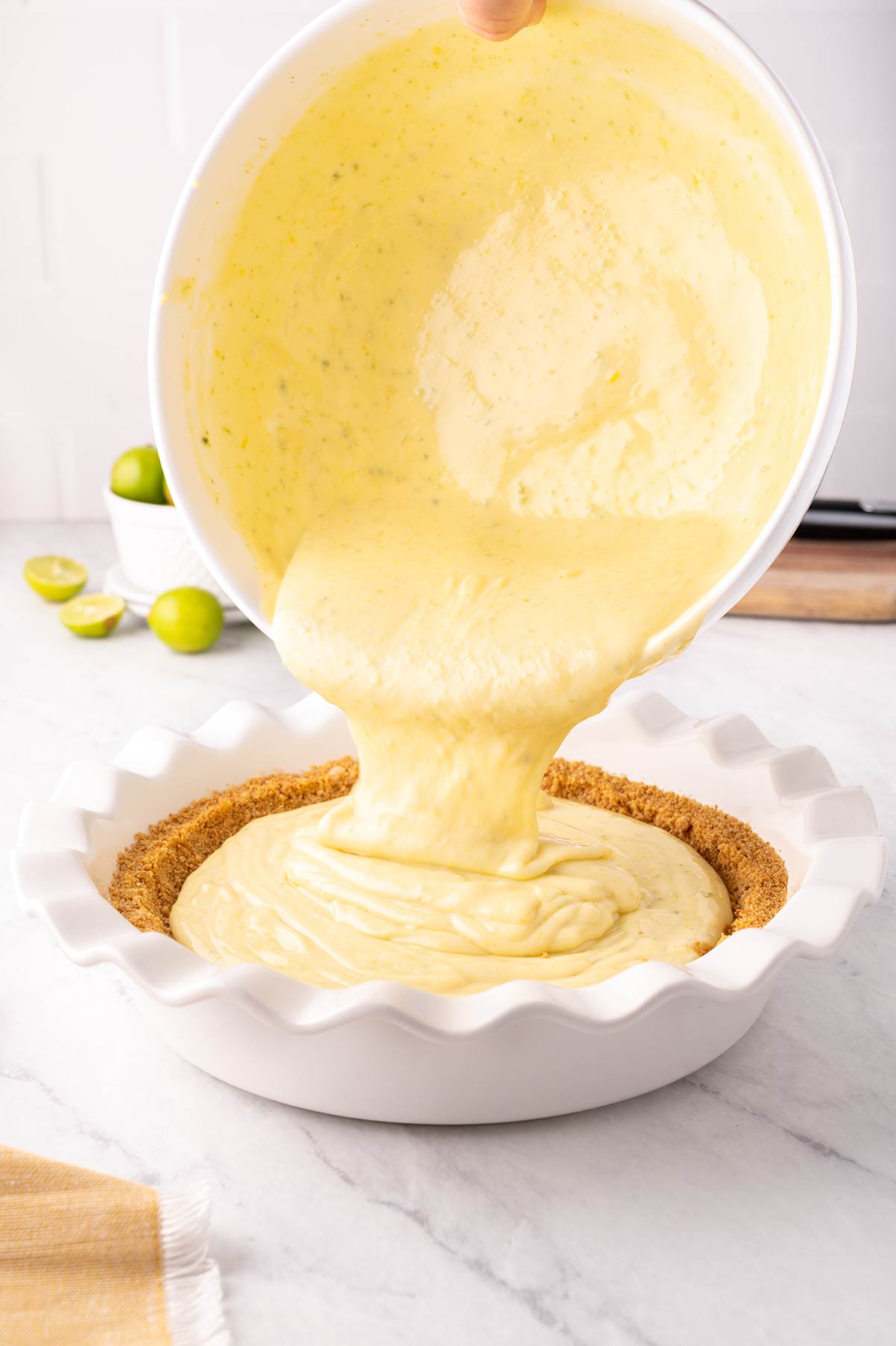
What to bake with key lime juice
Ready to get baking? Use lime juice in one of these delicious citrus-based recipes:
- Toasted Coconut Lime Meringue Tart
- Lime Cream Cheese Frosting
- Lemon Madeleines
- Lavender Lemon Bars
- Lemon Meringue Teacup Cakes

Key Lime Pie


